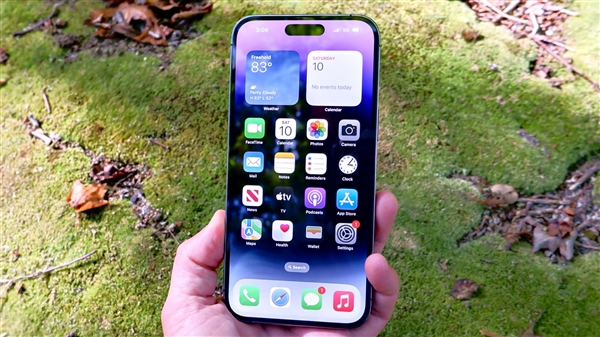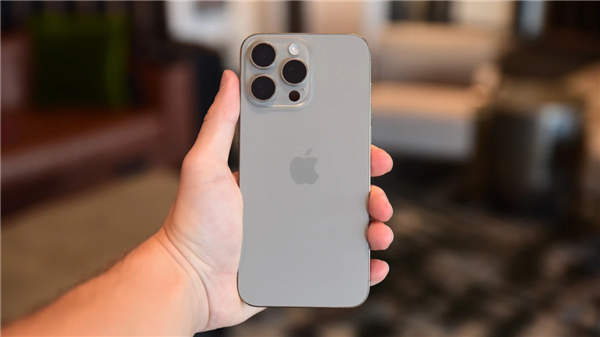Uncover the reason why iPhone loses power quickly in Erbin
As winter tourism in Harbin continues to be popular, the city has attracted a large number of domestic and foreign tourists with its unique ice and snow culture and magnificent snow scenery.
However, in this world of ice and snow, a problem has also attracted widespread attention and discussion among mobile phone users - many tourists who brought iPhones to visit found that their mobile phones encountered extreme conditions in places such as Harbin. At low temperatures, the battery power drops extremely quickly, and even more than 70% of the battery power is lost in a short period of time. As a result, some mobile phones have black screens and cannot be used normally.

Why does the iPhone lose power quickly in a low temperature environment?
First of all, lithium-ion batteries play a vital role in the iPhone and many other smartphones. It is the core component of the energy supply of these devices.
Its working principle is based on the migration of lithium ions back and forth between the positive electrode (such as lithium cobalt oxide, lithium nickel cobalt manganate, etc.) and the negative electrode (usually graphite or silicon-based materials) through the electrolyte during charge and discharge cycles. chemical reaction process.
This process requires the electrolyte to have good ionic conductivity to ensure that lithium ions can efficiently shuttle between the two electrodes.

However, in low-temperature environments, especially near or below freezing, the performance of lithium-ion batteries is significantly affected. The main reasons are as follows:
Increase in electrolyte viscosity: Under low temperature conditions, the molecular motion of the electrolyte slows down, causing its viscosity to increase and its fluidity to deteriorate.
Just like engine oil becomes more viscous in cold weather, the resistance to ion movement in the electrolyte increases, which greatly reduces the migration rate of lithium ions in the electrolyte.
Decrease in conductivity: Due to the increase in the viscosity of the electrolyte, the free diffusion ability of lithium ions inside the electrolyte is weakened, resulting in a significant decrease in the overall conductivity.
Conductivity is a key parameter that measures the ability of the electrolyte to transport lithium ions. Its reduction directly affects the charge transfer efficiency inside the battery.
Increase in electrode interface impedance: Low temperature will also cause the interaction between the electrolyte and the electrode surface to change, especially the solid electrolyte interface film (SEI film) formed on the electrode/electrolyte interface may thicken or deteriorate its performance. The deterioration further increases the resistance to charge transfer, that is, the electrode interface impedance increases.
Diffusion hysteresis inside the active material: The insertion and extraction process of lithium ions inside the active material will also be slowed down due to low temperature, and the diffusion kinetics will be blocked, which means that even if the lithium ions reach the electrode surface, they may have difficulty reaching the electrode surface. Rapidly entering or leaving the lattice structure of the electrode active material, thereby reducing the actual usable capacity of the battery.
How to help make your iPhone anti-freeze
In response to this problem, the following are three practical iPhone anti-freeze strategies:
Physical Warmth Method: Provide iPhone A warm environment is the basic method to prevent it from losing power quickly at low temperatures. Try to avoid direct exposure to cold air by using a thermal phone case or placing it in a pocket lined with insulating material.
In addition, do not leave your iPhone in an outdoor freezing environment for a long time, such as in a car, on an outdoor table or chair, etc. Reasonable use and charging strategy: Under low temperature conditions, try to avoid using your phone while charging, as this may not only cause uneven heating of the battery, but may also increase battery wear and tear.
In addition, if conditions permit, you can choose to charge in a warm indoor environment to improve charging efficiency and reduce battery loss. Turn on low power mode and optimize settings at the right time: The iPhone's built-in "low power mode" can help the phone save power at critical moments.
When this mode is enabled, the system will limit background application activity, email retrieval, automatic downloads, and some visual effects to maximize battery life.
At the same time, turning off unnecessary location services, Bluetooth, Wi-Fi and other functions, and adjusting the screen brightness to a moderate level can also reduce the impact of low temperature on the battery to a certain extent.
Summary
To sum up, the main reason why the iPhone loses power quickly in cold areas such as Harbin is the impact of low temperature on the performance of lithium-ion batteries. By taking the above-mentioned measures of physical warmth, reasonable use and charging habit adjustments, and optimizing system settings, this problem can be effectively alleviated and ensure that the iPhone can have good battery life in winter.

The above is the detailed content of Uncover the reason why iPhone loses power quickly in Erbin. For more information, please follow other related articles on the PHP Chinese website!

Hot AI Tools

Undresser.AI Undress
AI-powered app for creating realistic nude photos

AI Clothes Remover
Online AI tool for removing clothes from photos.

Undress AI Tool
Undress images for free

Clothoff.io
AI clothes remover

AI Hentai Generator
Generate AI Hentai for free.

Hot Article

Hot Tools

Notepad++7.3.1
Easy-to-use and free code editor

SublimeText3 Chinese version
Chinese version, very easy to use

Zend Studio 13.0.1
Powerful PHP integrated development environment

Dreamweaver CS6
Visual web development tools

SublimeText3 Mac version
God-level code editing software (SublimeText3)

Hot Topics
 1378
1378
 52
52
 deepseek ios version download and installation tutorial
Feb 19, 2025 pm 04:00 PM
deepseek ios version download and installation tutorial
Feb 19, 2025 pm 04:00 PM
DeepSeek Smart AI Tool Download and Installation Guide (Apple Users) DeepSeek is a powerful AI tool. This article will guide Apple users how to download and install it. 1. Download and install steps: Open the AppStore app store and enter "DeepSeek" in the search bar. Carefully check the application name and developer information to ensure the correct version is downloaded. Click the "Get" button on the application details page. The first download may require AppleID password verification. After the download is completed, you can open it directly. 2. Registration process: Find the login/registration portal in the DeepSeek application. It is recommended to register with a mobile phone number. Enter your mobile phone number and receive the verification code. Check the user agreement,
 Why can't the Bybit exchange link be directly downloaded and installed?
Feb 21, 2025 pm 10:57 PM
Why can't the Bybit exchange link be directly downloaded and installed?
Feb 21, 2025 pm 10:57 PM
Why can’t the Bybit exchange link be directly downloaded and installed? Bybit is a cryptocurrency exchange that provides trading services to users. The exchange's mobile apps cannot be downloaded directly through AppStore or GooglePlay for the following reasons: 1. App Store policy restricts Apple and Google from having strict requirements on the types of applications allowed in the app store. Cryptocurrency exchange applications often do not meet these requirements because they involve financial services and require specific regulations and security standards. 2. Laws and regulations Compliance In many countries, activities related to cryptocurrency transactions are regulated or restricted. To comply with these regulations, Bybit Application can only be used through official websites or other authorized channels
 Sesame Open Door Trading Platform Download Mobile Version Gateio Trading Platform Download Address
Feb 28, 2025 am 10:51 AM
Sesame Open Door Trading Platform Download Mobile Version Gateio Trading Platform Download Address
Feb 28, 2025 am 10:51 AM
It is crucial to choose a formal channel to download the app and ensure the safety of your account.
 Anbi app official download v2.96.2 latest version installation Anbi official Android version
Mar 04, 2025 pm 01:06 PM
Anbi app official download v2.96.2 latest version installation Anbi official Android version
Mar 04, 2025 pm 01:06 PM
Binance App official installation steps: Android needs to visit the official website to find the download link, choose the Android version to download and install; iOS search for "Binance" on the App Store. All should pay attention to the agreement through official channels.
 How to solve the problem of 'Undefined array key 'sign'' error when calling Alipay EasySDK using PHP?
Mar 31, 2025 pm 11:51 PM
How to solve the problem of 'Undefined array key 'sign'' error when calling Alipay EasySDK using PHP?
Mar 31, 2025 pm 11:51 PM
Problem Description When calling Alipay EasySDK using PHP, after filling in the parameters according to the official code, an error message was reported during operation: "Undefined...
 Download link of Ouyi iOS version installation package
Feb 21, 2025 pm 07:42 PM
Download link of Ouyi iOS version installation package
Feb 21, 2025 pm 07:42 PM
Ouyi is a world-leading cryptocurrency exchange with its official iOS app that provides users with a convenient and secure digital asset management experience. Users can download the Ouyi iOS version installation package for free through the download link provided in this article, and enjoy the following main functions: Convenient trading platform: Users can easily buy and sell hundreds of cryptocurrencies on the Ouyi iOS app, including Bitcoin and Ethereum. and Dogecoin. Safe and reliable storage: Ouyi adopts advanced security technology to provide users with safe and reliable digital asset storage. 2FA, biometric authentication and other security measures ensure that user assets are not infringed. Real-time market data: Ouyi iOS app provides real-time market data and charts, allowing users to grasp encryption at any time
 gate.io sesame door download Chinese tutorial
Feb 28, 2025 am 10:54 AM
gate.io sesame door download Chinese tutorial
Feb 28, 2025 am 10:54 AM
This article will guide you in detail how to access the official website of Gate.io, switch Chinese language, register or log in to your account, as well as optional mobile app download and use procedures, helping you easily get started with the Gate.io exchange. For more tutorials on using Gate.io in Chinese, please continue reading.
 How to find the download link of Ouyi okx Android and Apple
Feb 21, 2025 pm 05:39 PM
How to find the download link of Ouyi okx Android and Apple
Feb 21, 2025 pm 05:39 PM
Ouyi OKX is a world-leading cryptocurrency exchange that provides users with a safe and convenient trading experience. Users can download Ouyi OKX's mobile apps, including Android and Apple versions through official channels.




